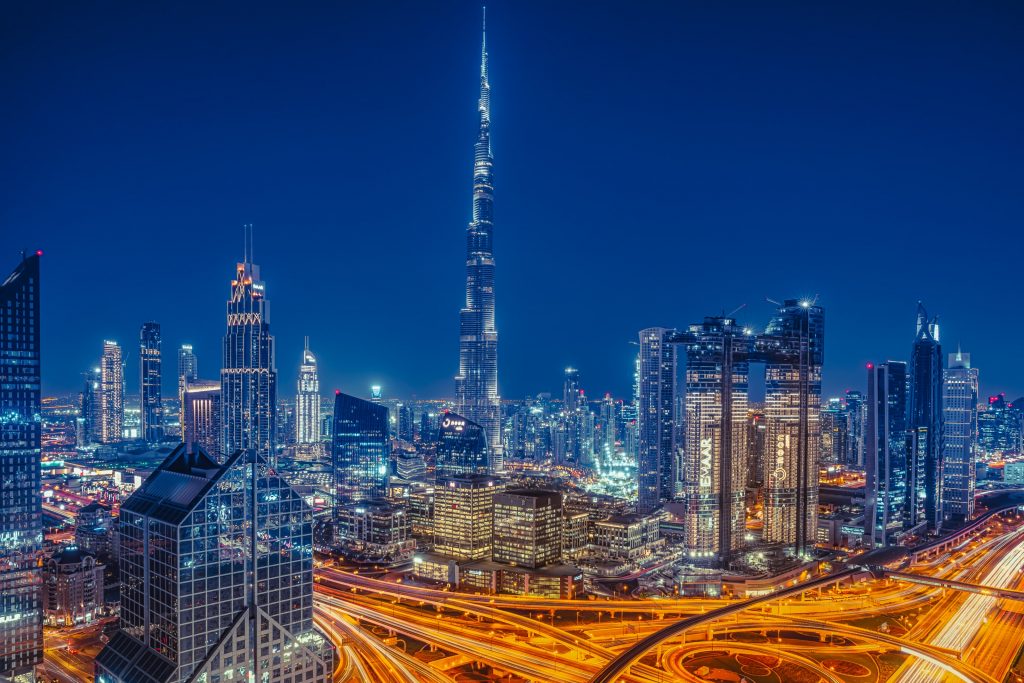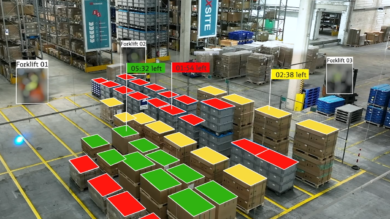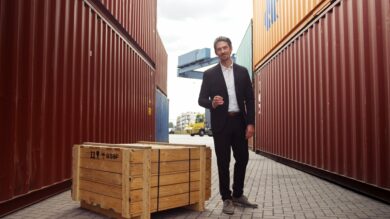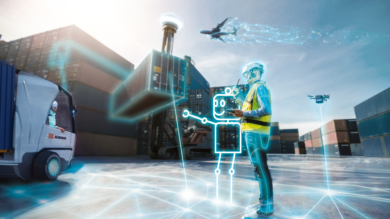With an ambitious goal to double the size of its economy over the next 10-years, the United Arab Emirates (UAE) Minister of Economy Abdulla bin Touq Al Mari says that the UAE seeks to reach AED 3 trillion, equivalent to over 815 billion US Dollars, by 2031. Serving the region, the Indian sub-continent, and providing the halfway stage for goods bound for Europe from China and East Asia – Dubai appears to have great potential after all. Could this mean that Dubai is on course to become the next global hub of the future?
The rise of logistics in Dubai
Dubai emerged as an essential pillar of trade development in the Arabian Peninsula following the late 1970s and has positively impacted the Emirates economy and that of the entire region. Being one of the seven Emirates in the UAE, its greatest strength is its strategic location – in the center of the most important shipping routes between the three oceans, Indian, Pacific, and Atlantic – making Dubai the perfect central point.
Over the last ten years, port facilities have been overwhelmed in Kuwait, and Saudi Arabia due to the surge in trade volumes resulting from the rapid increase in the region’s economic activity. In this regard, Dubai held the fort that would have otherwise collapsed the Peninsula region’s development.

The Global Competitiveness Index 4.0, published by the World Economic Forum in 2020, noted that Dubai has one of the most efficient logistics infrastructures compared to other Gulf Cooperation Council (GCC) countries. With the UAE ranking 25th globally, the report further acknowledges that the country has one of the most modern transport systems – why Dubai is best positioned to become a global logistics hub.
What are the key characteristics of a global logistics hub?
In the Global and Emerging Logistics Hub report by CBRE, four commonalities have been identified amongst the world’s greatest logistics hubs:
- multiple transportation options, inclusive of major airports, seaports, highway interchanges, and multimodal transportation facilities,
- An array of storage facilities to process, store and distribute goods,
- International access and connections, facilitating a multitude of international engagements as a central point to movement,
- and an active engagement in international trade of goods and services.
Many logistics service providers establish a footprint in these hubs to ensure efficient and quality customer services.
Logistics in Dubai – Seamless consumer-centric processes
For example, with a regional head office for Middle East and Africa based in Dubai, DB Schenker established its footprint years ago in the region and recently further expanded it with the third part of their state-of-the-art warehouse at a groundbreaking in Dubai South’s Logistics District. The warehouse will span 84,000 square meters by June 2022, making the company one of the fastest-growing logistics service providers in the region, expanding the total area from 40,000 to 325,000 square meters in the last seven years.

The mega green logistics center is located in one of the region’s most important free trade zones with Aramex as one of the key partnerships. It directly connects to Jebel Ali Port, the largest seaport in the Middle East, and Al Maktoum International Airport, the world’s largest airport when fully operational, enabling fast and uncomplicated transportation.
The project affirms the company’s commitment to sustainable operations and to underpin their leading ecological position in the UAE market by reducing CO2 emissions and costs, indeed a competitive advantage. The DB Schenker warehouse facility will utilize 100 percent renewable energy and act as a distribution hub for the GCC.
In summary
The City of Gold is fast becoming a popular supply and re-distribution gateway for multi-national companies and a trending destination for logistics expansion. While the ongoing pandemic disrupted many supply chains worldwide, Dubai, with its macroeconomic stability, has taken on new challenges and turned them into innovation opportunities for the future.
Published: August 2021










